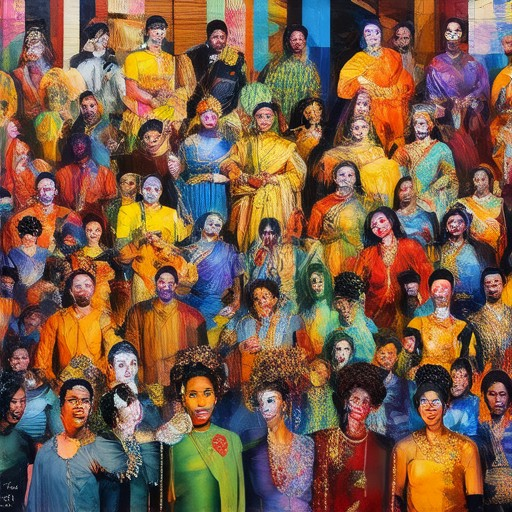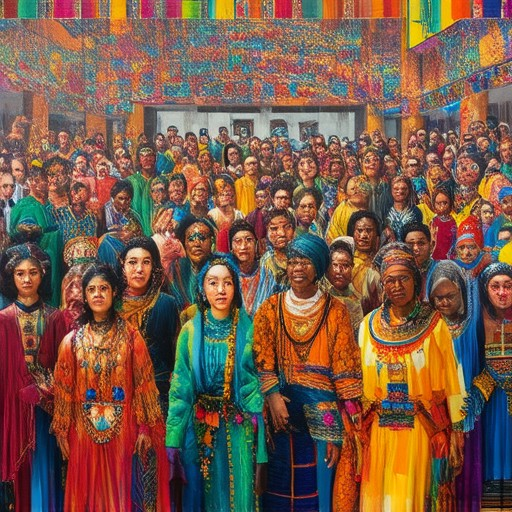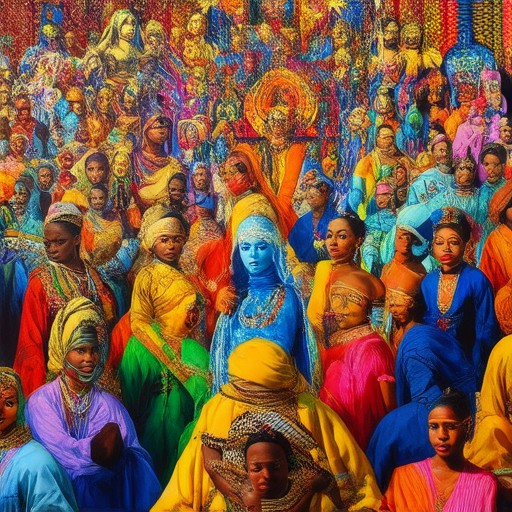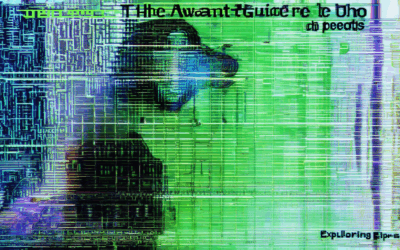In recent years, the rise of indie rap movements has brought a fresh perspective to the world of hip-hop, offering a unique blend of authenticity and creativity that resonates with audiences worldwide. These movements, characterized by their independence from mainstream structures, have redefined the boundaries of the genre, fostering a culture of artistic freedom and grassroots support. From their origins in underground scenes to their growing influence on the global stage, indie rap movements continue to challenge conventions and inspire new waves of musicians. This article delves into the defining characteristics of these movements, exploring what sets them apart from mainstream hip-hop and their profound impact on the music industry. By examining the cultural significance, lyrical depth, and communal spirit of indie rap, we uncover the essence of a phenomenon that has forever changed the landscape of contemporary music.
Key Takeaways
– Authenticity: Indie rap movements prioritize genuine, personal storytelling, creating deep connections with listeners.
– Grassroots Roots: They operate independently, often self-releasing and connecting directly with audiences through DIY approaches.
– Independent Sound: Defined by unique production styles like lo-fi beats and organic instrumentation.
– Community and Collaboration: Thrive on collective efforts, organizing events and fostering creativity.
– Social Commentary: Address social issues, offering powerful commentary and sparking change.
– Creativity and Innovation: Experiment with diverse genres and sounds, pushing hip-hop boundaries.
– DIY Ethos: Embrace self-production and distribution, emphasizing artistic control.
– Platform Discovery: Discovered via platforms like Bandcamp and SoundCloud, reaching dedicated fans.
– Impactful Artists: Icons like Joey Bada$ and J. Cole rise through independent paths, proving authenticity’s power.

What Defines an Indie Rap Movement?
An indie rap movement is characterized by its authenticity, independence from mainstream structures, and a DIY (do-it-yourself) approach. These artists often operate outside traditional recording deals, focusing on creating music that resonates personally with them rather than catering to mass appeal. Here’s a breakdown of key elements:
- Authenticity : Indie rap artists prioritize genuine storytelling, reflecting their personal experiences, struggles, and perspectives. This authenticity often leads to deeper emotional connections with audiences.
- Independence : Unlike mainstream rap, indie artists typically don’t sign with major record labels. They may self-produce, distribute music independently, or work with smaller, independent labels. This independence allows for greater creative freedom.
- DIY Ethos : Many indie rappers embrace a DIY mindset, handling everything from production to distribution. Platforms like Bandcamp and SoundCloud have become hubs for sharing music, bypassing traditional gatekeepers.
- Unique Storytelling : Indie rap often features narrative-driven lyrics, with artists crafting intricate stories that explore social issues, personal journeys, or abstract concepts.
- Experimental Sounds : Indie rap artists frequently experiment with beats, blending genres like jazz, lo-fi, or electronic music to create distinct sonic identities.
- Community-Driven : Indie rap movements thrive on community, with artists supporting each other through collaborations, festivals, and collective projects. This sense of unity fosters a loyal fanbase.
- Cultural Impact : Indie rap challenges conventional norms and often pushes boundaries, influencing both the rap genre and broader music culture. Platforms like Pitchfork and Complex regularly highlight indie rap artists, showcasing their influence.
The indie rap movement represents a vibrant subculture dedicated to creativity, individuality, and resilience, continuing to evolve and inspire new generations of artists.
What Sets Indie Rap Movements Apart From Mainstream Hip-Hop?
Indie rap movements distinguish themselves through their unwavering commitment to authenticity, originality, and a DIY ethos that often clashes with mainstream conventions. Unlike the polished, formulaic approach of mainstream hip-hop, indie rap prioritizes personal storytelling, experimental sounds, and a focus on community over commercial success.
1. Authenticity and Personal Storytelling
- Indie rap artists frequently delve into deeply personal narratives, exploring themes like mental health, social issues, and everyday struggles. This introspective approach fosters a genuine connection with listeners, creating a sense of intimacy that’s rare in mainstream hip-hop.
- Many indie rappers eschew the typical braggadocio found in mainstream tracks, instead opting for vulnerability and emotional depth. This authenticity resonates strongly with fans seeking relatable and honest music.
2. Originality Over Formula
- Indie rap movements embrace innovation, experimenting with unique beats, delivery styles, and lyrical content. Artists often blend genres like jazz, lo-fi, and electronic elements, creating sounds that defy traditional hip-hop norms.
- The lack of a rigid structure in indie rap allows for greater creative freedom, resulting in music that feels fresh and boundary-pushing compared to the repetitive patterns dominating mainstream charts.
3. Community-Driven Approach
- Indie rap thrives on a strong sense of community, often operating outside the mainstream spotlight. Artists and fans alike view this movement as a cultural revolution, emphasizing collaboration and mutual support.
- Platforms like Bandcamp and SoundCloud have become hubs for indie rap, allowing artists to connect directly with fans and build loyal audiences without relying on major labels.
4. Competitive Landscape and Influence
- While indie rap faces competition from established subgenres like SoundCloud Rap and West Coast Hip Hop, it has carved its own niche by staying true to its values. Artists like Joey Bada$$, Odd Future, and Kendrick Lamar have influenced both indie and mainstream scenes, proving that authenticity transcends genre boundaries.
- The rise of streaming platforms has democratized music distribution, giving indie rap artists more power to shape their own careers and influence the broader hip-hop landscape.
5. Production and Artistic Vision
- Indie rap producers often double as beatmakers, crafting intricate, layered sounds that set them apart. This hands-on approach allows for experimentation and innovation, resulting in productions that feel organic and artistically driven.
- Many indie rap albums and mixtapes are labors of love, reflecting the dedication of artists who prioritize quality over quantity.
6. Cultural Impact and Grassroots Movement
- Indie rap serves as a catalyst for social change, addressing issues like systemic inequality and mental health through powerful lyrics. This cultural impact has earned the movement a dedicated following and critical acclaim.
- By remaining independent, indie rap artists have maintained their artistic integrity, refusing to compromise for commercial gains. This stance has fostered a grassroots movement that continues to inspire future generations of hip-hop artists.
Explore our curated selection of indie rap tracks and articles to dive deeper into this vibrant cultural movement.

How Have Indie Rap Movements Influenced the Music Industry?
Indie rap movements have had a profound impact on the music industry, reshaping its landscape through innovation, community-building, and challenging traditional norms. These movements have emerged as powerful forces, driving creativity and diversity while democratizing access to music production and distribution.
Innovation in Music Production
Indie rap artists and collectives have pushed boundaries in music production, blending genres like lo-fi, trap, and experimental beats. Platforms like Spotify and Apple Music have amplified the reach of these sounds, enabling independent artists to experiment without relying on major labels.
Distribution and Accessibility
Indie rap movements have revolutionized how music is consumed and shared. Social media platforms and streaming services have become vital tools for artists to connect directly with fans, bypassing traditional gatekeepers. This shift has empowered marginalized voices and fostered a global audience for underrepresented artists.
Community-Building and Grassroots Movements
These movements have cultivated strong communities through festivals, mixtapes, and collaborative projects. Events like South by Southwest have provided opportunities for indie rap artists to showcase their talents, further embedding them into the mainstream consciousness.
Cultural Impact and Representation
Indie rap movements have challenged stereotypes and expanded the definition of hip-hop. Artists like Kendrick Lamar and Travis Scott have blurred the lines between mainstream and indie, proving that authenticity and originality can thrive beyond commercial constraints.
Business Model Shifts
Indie rap has redefined artist-label relationships, often favoring partnerships based on mutual respect rather than rigid contracts. This shift has allowed artists to retain creative control and profit from their work, inspiring a broader conversation about fairness in the music industry.
Overall, indie rap movements have not only transformed the sound of modern music but also redefined how artists engage with their audiences and the industry itself. Their influence continues to grow, shaping a more inclusive and innovative musical landscape.

What Defines the Essence of Indie Rap Movements?
Indie rap movements are characterized by their authenticity, grassroots origins, and a distinctive, independent sound. These movements emphasize raw, unfiltered storytelling and a connection with the cultural roots of hip hop.
- Authenticity: Indie rap artists often share deeply personal stories and emotional experiences, creating music that resonates genuinely with listeners. This approach fosters a sense of intimacy and relatability, setting indie rap apart from more polished commercial hip hop.
- Grassroots Roots: Unlike mainstream rap, which often relies on major record labels and mainstream appeal, indie rap typically operates outside of these structures. Many indie artists self-release their music, distribute it through independent platforms, or perform at smaller, niche venues to connect directly with their audience.
- Independent Sound: Indie rap is defined by its unique production styles, often featuring lo-fi beats, organic instrumentation, and experimental flows. This musical independence allows artists to push creative boundaries and develop sounds that reflect their individuality.
- Community and Culture: Indie rap movements thrive on a strong sense of community. Artists often collaborate with each other, organize local events, and promote a culture of creativity and authenticity. This collective spirit strengthens the movement and ensures its continued growth.
- Social Commentary: Many indie rap artists use their music to address social issues, political themes, and systemic inequalities. This commitment to social consciousness adds depth and relevance to their work, making it a powerful tool for change.
The essence of indie rap movements lies in their ability to stay true to their roots while pushing the boundaries of hip hop culture. By prioritizing authenticity, independence, and community, they continue to influence and inspire future generations of artists and fans alike.
Explore More About Underground Beats
Discover Hip Hop’s Avant-Garde
What Characterizes Indie Rap Movements?
Indie rap movements are defined by their authenticity, creativity, and originality, often operating under a DIY ethos and prioritizing unique storytelling. These movements emphasize individuality, artistic freedom, and a connection with their communities, setting them apart from mainstream hip hop.
- Authenticity: Indie rap artists often draw from personal experiences, creating relatable and genuine narratives. This approach fosters a strong connection with audiences, making their music feel deeply personal and sincere.
- Creativity and Innovation: These movements push boundaries, experimenting with diverse sounds, beats, and lyrical styles. Artists frequently blend genres like jazz, funk, and electronic elements to develop a distinct sound.
- DIY Ethos: Many indie rappers and collectives self-produce their music, distribute it independently, and build their own fanbases. This do-it-yourself approach reflects a commitment to independence and artistic control.
- Storytelling and Social Commentary: Indie rap often delves into themes of social justice, personal struggles, and cultural issues. Artists use their platforms to share stories and spark conversations, making their music impactful and thought-provoking.
- Community and Collaboration: These movements thrive on collaboration, bringing together artists, producers, and fans to create cohesive projects. The sense of community strengthens the cultural impact of indie rap.
Indie rap movements also embrace diversity, with subgenres like lo-fi, experimental, and conscious hip hop flourishing within these circles. These artists often challenge conventions, pushing the boundaries of traditional hip hop while staying true to its roots. By fostering authenticity and innovation, indie rap continues to carve out its own niche in the music landscape.

The Key Characteristics of Indie Rap Movements
Indie rap movements are defined by their unique blend of personal expression, experimental sounds, and a strong emphasis on authenticity. These artists often operate outside mainstream systems, allowing them to push creative boundaries and explore diverse themes.
- Personal Touch:** Indie rap artists frequently infuse their music with personal stories, emotions, and experiences. Their lyrics often reflect social commentary, introspection, or personal struggles, creating a deeply connective experience for listeners.
- Experimental Sounds: Unlike mainstream rap, which often relies on conventional structures and hooks, indie rap embraces a wider array of musical styles. Artists experiment with lo-fi beats, jazz influences, and unconventional rhyme schemes, resulting in a more eclectic sound.
- Authenticity-Driven Creativity: Many indie rap artists choose to forgo traditional record deals, opting instead for DIY approaches. This independence allows them to maintain artistic integrity, focusing on creating music that truly represents their vision without compromising for commercial success.
These movements are often discovered through platforms like Bandcamp, SoundCloud, and YouTube, where artists share their work directly with fans. Notable figures such as Joey Bada$ and J. Cole gained prominence through independent paths, showcasing the power of authenticity in music.
Indie rap continues to thrive as a testament to the enduring power of individual creativity and the desire for genuine, unfiltered artistry in the music world.





0 Comments